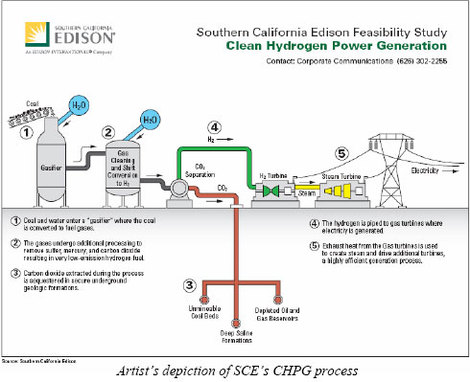The International Energy Outlook 2007 (IEO2007) presents an assessment by the Energy Information Administration (EIA) of the outlook for international energy markets through 2030. Selected excerpt's regarding total energy consumption and liquids are given in the remainder of this post. Other topics will be reviewed later.
In its reference case World marketed energy consumption is projected to increase by 57 percent from 2004 to 2030. Total energy demand in the non-OECD countries increases by 95 percent, compared with an increase of 24 percent in the OECD countries.
 The IEO2007 reference case projects increased world consumption of marketed energy from all sources over the 2004 to 2030 projection period (left). Fossil fuels (petroleum and other liquid fuels, natural gas, and coal)
The IEO2007 reference case projects increased world consumption of marketed energy from all sources over the 2004 to 2030 projection period (left). Fossil fuels (petroleum and other liquid fuels, natural gas, and coal)
Liquids remain the dominant energy source, given their importance in the transportation and industrial end-use sectors; however, their share of the world energy market in this year’s outlook is lessened in the projection, as other fuels replace liquids where possible outside those sectors.
World consumption of petroleum and other liquid fuels, grows from 83 million barrels oil equivalent per day in 2004 to 97 million in 2015 and 118 million in 2030. liquids production is projected to increase by 14 million barrels per day from 2004 to 2015 and by an additional 20 million barrels per day from 2015 to 2030. OPEC producers are expected to provide more than one-half of the additional production in 2015 (8 million barrels per day) and more than two-thirds in 2030 (23 million barrels per day). Non-OPEC production in 2030 is projected to be 12 million barrels per day higher than in 2004, representing 35 percent of the increase in total world production over the 2004 total. The estimates of production increases are based on current proved reserves and a country-by-country assessment of ultimately recoverable petroleum, as well as the potential for unconventional liquids production.
In IEO2007, the projected increase in OPEC production (excluding Angola) is about 22 million barrels per day over the same period. There are several regions where production is restrained through 2015 in the reference case. For instance, in the key resource-rich countries of Mexico and Venezuela, expected investment levels are lower than those assumed in the IEO2006 reference case. In both countries, liquids production is projected not to expand (and, in Mexico, to decline) until after 2015, when economic decisions on investment allow production to improve. Also, North Sea production is projected to decline more rapidly than in last year’s outlook.
World production of unconventional liquids (including biofuels, coal-to-liquids, and gas-to-liquids), (left) which totaled only 2.6 million barrels per day in 2004, is projected to increase to 10.5 million barrels per day and account for 9 percent of total world liquids supply in 2030, on an oil equivalent basis, in the IEO2007 reference case.
The world oil prices in the IEO2007 reference case—and in the high world oil price case—also are projected to make previously uneconomical, unconventional resources available.
Reserve estimates for oil, natural gas, and coal are difficult to develop. EIA develops estimates of reserves for the United States but not for foreign countries. As a convenience to the public, EIA makes available global reserve estimates from the Oil & Gas Journal, World Oil, and BP’s Statistical Review of World Energy, shown below.
Since 2000, the largest net increase in estimated proved oil reserves has been made in Canada, with the addition of 174 billion barrels of Canadian oil sands as a conventional reserve. Iranian oil reserves have increased by 46.6 billion barrels, or 52 percent, since 2000. Kazakhstan has had the third-largest increase, 24.6 billion barrels, since 2000.
You may be disapointed in some of these projections, but I believe that they are as good as any available and if you wish to alter the course of energy consumption you must take steps such as energy conservation by using less energy and switching to energy sources that are more environmentally friendly.





 The batteries that will be produced by the new company are based on the "LIM series" of Large Lithium-ion batteries manufactured by GS Yuasa (currently the only mass producer of Large Lithium-ion batteries in Japan) with improved cell-structure and electrode materials to improve the energy density and power density of the new batteries. These batteries will have ten times the capacity of those for hybrid electric vehicles, and are the perfect choice for EVs. MMC plans to install the batteries to its next generation EV "i MiEV" (i Mitsubishi innovative Electric Vehicle), which it aims to introduce to the market by 2010. The batteries can also be supplied to EVs manufactured by other auto-makers and to industrial applications for energy storage use.
The batteries that will be produced by the new company are based on the "LIM series" of Large Lithium-ion batteries manufactured by GS Yuasa (currently the only mass producer of Large Lithium-ion batteries in Japan) with improved cell-structure and electrode materials to improve the energy density and power density of the new batteries. These batteries will have ten times the capacity of those for hybrid electric vehicles, and are the perfect choice for EVs. MMC plans to install the batteries to its next generation EV "i MiEV" (i Mitsubishi innovative Electric Vehicle), which it aims to introduce to the market by 2010. The batteries can also be supplied to EVs manufactured by other auto-makers and to industrial applications for energy storage use.












 A
A 


 VC Ratings blog
VC Ratings blog




